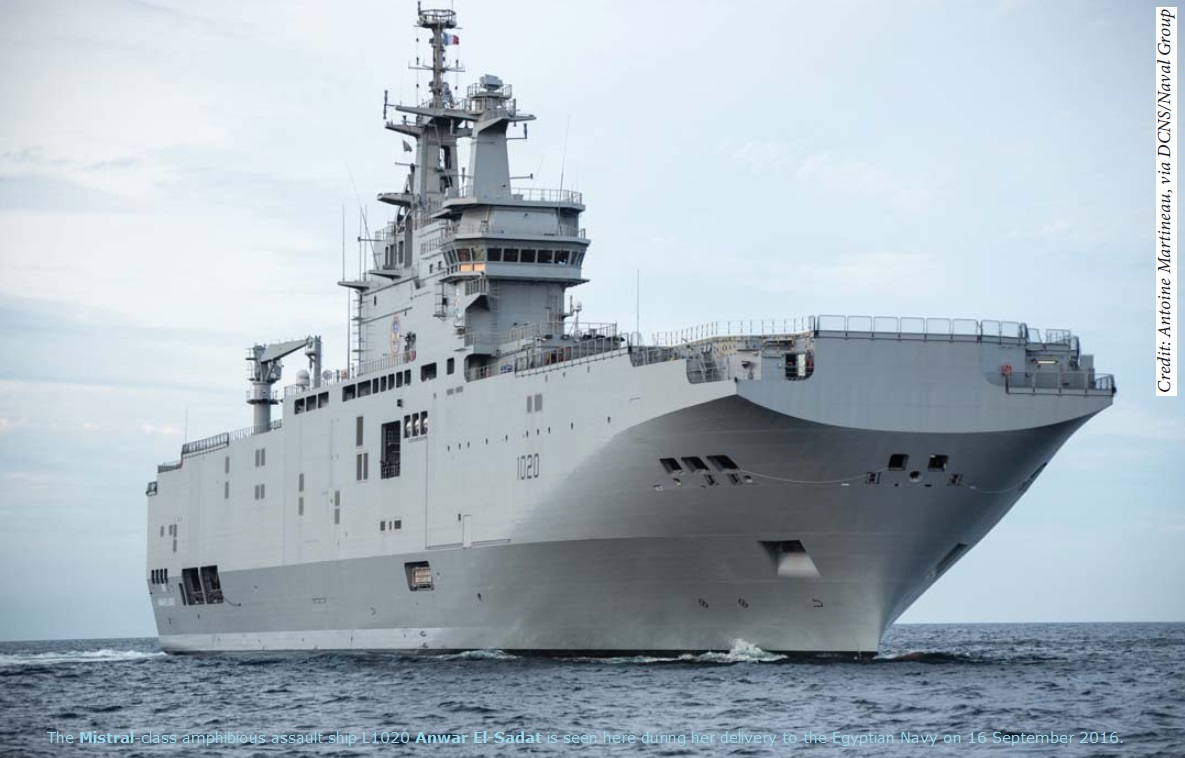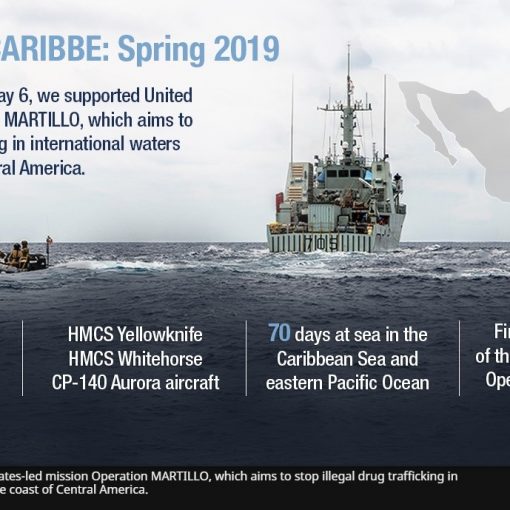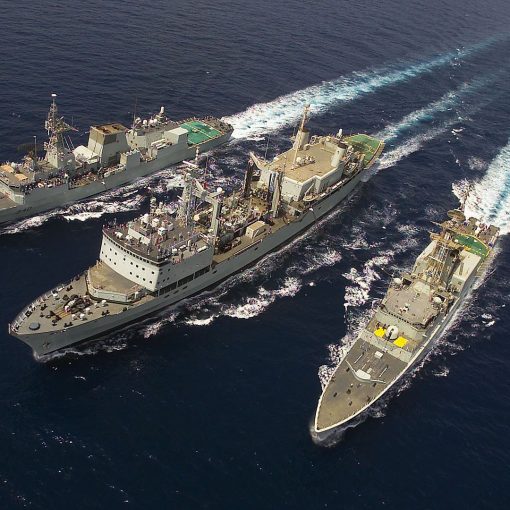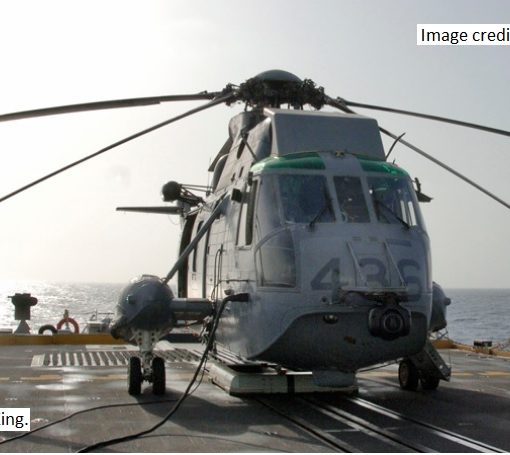When the conflict in south-eastern Ukraine flared up, a contract signed in 2010 for the French shipbuilder DCNS to build two French Mitral-class amphibious ships for the Russian navy was cancelled. David Pugliese, among others, commented that Canada was an interested buyer for the two ships. These comments, along with reporting about the declining state of the RCN, caused a lot of thought about what kind of navy Canada should be pursuing.
The idea of amphibious ships for the navy has gone around before, most recently promoted by General (ret.) Rick Hillier’s ‘Big Honking Ship’ in 2005. He argued that the Canadian military lacked strategic mobility and an amphibious capability would be a transformative change for the entire armed forces.
Hillier was probably right, but the price tag was simply too high, especially at a time when the Canadian military was engaged in a major operation in a landlocked country half way around the world. He settled for inter-theatre airlift in the form of four CC-177 ‘Globemasters’ (a fifth was bought later) and improved tactical airlift with fifteen CH-47 ‘Chinook’ helicopters and seventeen C-130J ‘Super Hercules’ to solve his immediate problems. Airlift is expensive to purchase and operate, but it is responsive to short-notice and urgent requirements.
When the latest round of speculation about acquiring an amphibious capability for the Canadian navy started, the Royal United Services Institute in Nova Scotia held a ‘Free Flowing Strategic Discussion’ session at CFB Halifax for service members to discuss the idea. The results of that session are published on the RUSI NS website here. Author Darren Antler reported that the general opinion was the ships would indeed add a significant new capability for the navy but the logistical and administrative costs of operating them would be prohibitive. Especially concerning was the question of aircraft for the ships.
One Mistral-class ship has an air detachment of 20 helicopters of three different types. Where would the Royal Canadian Air Force go to put together the needed resources to make these ships operate, assuming they would perform similar missions and tasks to those envisioned by the French? The ‘total bill’ would also need to include helicopters for training, maintenance plus test and evaluation work. No wonder the ‘air wings’ for large American aircraft carriers are one of highest costs associated with operating them.
So, with all of our resources, how is it possible that the deal was too ‘rich’ for Canada but ‘affordable’ for Egypt? The Egyptian Navy is ranked as the largest in the Middle East and Africa and the seventh largest in the world (measured by number of vessels). This is a misleading statistic. Like the RCN, the Egyptian Navy predominantly operates a force comprised of frigates (10) and submarines (4+4 ordered) plus a mine warfare flotilla (23). A major difference is that it also has a large number of fast missile (31) and gun boats (10). It has one operational support ship and three amphibious landing ships with eight landing craft. With 18,000 people in their navy, the Egyptians have a manpower surplus of about 8,000 over the Canadian navy.
However, the Egyptian navy is still predominantly a small-ship navy and its support infrastructure will be suited for the type of fleet that it operates. Like the RCN, it is divided into two fleets, in their case one in the Mediterranean and one in the Red Sea. The two Egyptian naval formations guard either end of the Suez Canal, which is currently being expanded significantly. Also very similar to the Canadian situation is the modest number of helicopters provided by the Egyptian Air Force to support the navy (24). However, with 260 helicopters listed in their air force inventory, obtaining more for duty afloat may not be as difficult as for Canada (140).
The answer to the question of purchase cost is that the ships have been paid for by Saudi Arabia for Egypt and that they are to be operated as part of a joint (sic: combined) force by the two countries. Their motivation for this venture is ostensibly a response to the threat posed by ISIL forces operating in Syria and Iraq.
Egypt and Saudi Arabia signed the “Cairo Declaration” on July 30th, a document that promotes economic ties and military cooperation between the two countries. The original motivation was reportedly to assist Egypt in the ongoing prohibition of the Muslim Brotherhood, an organization also banned in Saudi Arabia.
But, how does the acquisition of two large amphibious assault ships aid in the Egyptian and Saudi plans to operate against either ISIL or the Muslim Brotherhood? The types of aircraft flown from the Mistrals are short-ranged helicopters unsuited for strike operations inside Syria or Iraq. Concentrating a large number of helicopters onboard a major warship does not led them to internal security operations against a domestic threat. There is not an obvious logic for this move, unless it is to conduct operations at sea to stem the flow of migrants to Europe from Libya. This is also questionable, as it would make Europe’s problem Egypt’s, which has no interest or resources for such a move.
It appears likely that another motive may be at play here. Saudi Arabia has a history of purchasing French warships and currently has seven in naval service. Egypt will receive a Fremm Aquitaine-class frigate from France in 2018. Has a deal been struck with France to buy the Mistrals as a bargaining move for favourable pricing on future warships? It could be possible and may even be probable.
Less likely is a rumour currently circulating that Egypt will re-sell the Mistrals back to the origin purchaser, Russia. This will be done to secure favourable terms on a wide array of Russian military hardware that will be more suitable to Egyptian defence and internal security requirements. Russia has been working hard to raise its diplomatic profile in the Middle East and such a deal would serve their interests very well. Egypt has operated Russian and Soviet equipment in the past and seems ready to do so again.
We will have to wait and see what develops on this one.






One thought on “Saudi Arabia purchases two French Mistrals for Egypt”